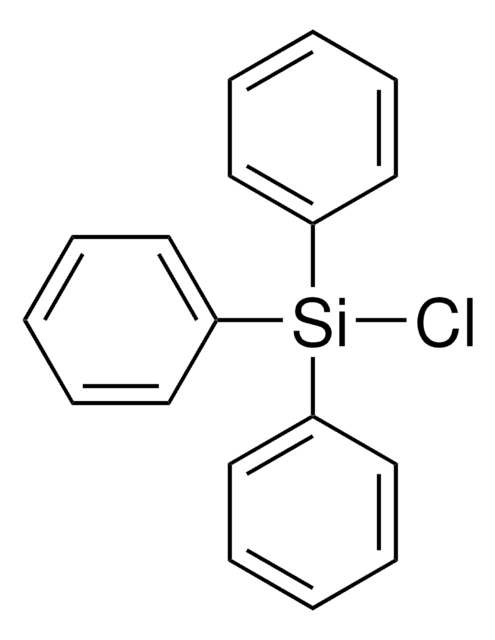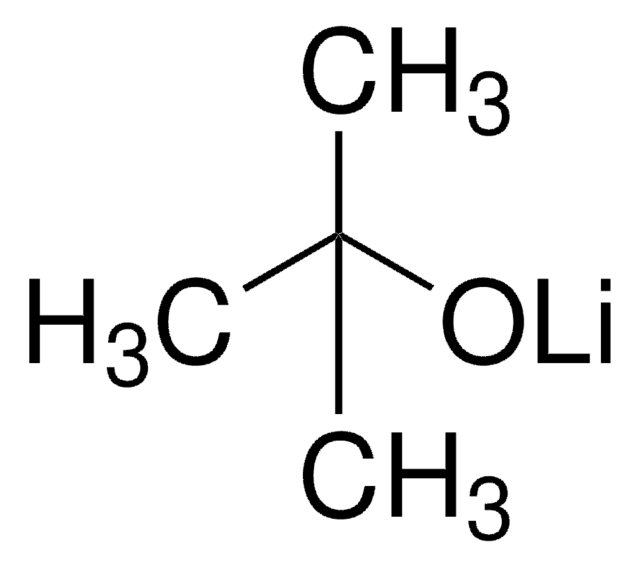Kluczowe dokumenty
192724
Diisobutylaluminum hydride solution
25 wt. % in toluene
Synonim(y):
DIBAL, DIBAL-H
About This Item
Polecane produkty
Postać
liquid
Poziom jakości
przydatność reakcji
reagent type: reductant
stężenie
25 wt. % in toluene
gęstość
0.846 g/mL at 25 °C
ciąg SMILES
CC(C)C[AlH]CC(C)C
InChI
1S/2C4H9.Al.H/c2*1-4(2)3;;/h2*4H,1H2,2-3H3;;
Klucz InChI
AZWXAPCAJCYGIA-UHFFFAOYSA-N
Szukasz podobnych produktów? Odwiedź Przewodnik dotyczący porównywania produktów
Powiązane kategorie
Opis ogólny
Diisobutylaluminum hydride reducing agent is commonly used for the reduction of an ester to aldehyde.
Zastosowanie
- N
- -(cis-2-Vinylcyclohexyl)succinimide to 1-(cis-2-vinylcyclohexyl)-5-hydroxy-2-pyrrolidinone
- N-(But-4-en-1-y1)-2(E)-(carbethoxymethylidene)-5-oxo-pyrrolidine to N-(but-4-en-1-yl)- 2(E)-(carbethoxymethylidene)-5-hydroxypyrrolidine
- N-(Hept-1-en-4-y1)-2(E)-(carbethoxymethylidene)-5-oxo-pyrrolidine to N-(hept-1-en-4-y1)-2(E)-(carbethoxymethylidene)-5-hydroxypyrrolidine
- N-(cis-2-Vinylcyclohexyl)-2-(carbethoxymethylidene)-5-oxopyrrolidine to rel-(3aR,SS,5aS,SaR)-1( E)-(carbethoxymethylidene)-5-(formyloxy)dodecahydropyrrolo[1,2-a]quinoline
Opakowanie
Informacje prawne
Hasło ostrzegawcze
Danger
Zwroty wskazujące rodzaj zagrożenia
Zwroty wskazujące środki ostrożności
Klasyfikacja zagrożeń
Aquatic Chronic 3 - Asp. Tox. 1 - Eye Dam. 1 - Flam. Liq. 2 - Pyr. Liq. 1 - Repr. 2 - Skin Corr. 1B - STOT RE 2 Inhalation - STOT SE 3 - Water-react 1
Organy docelowe
Central nervous system
Zagrożenia dodatkowe
Kod klasy składowania
4.2 - Pyrophoric and self-heating hazardous materials
Klasa zagrożenia wodnego (WGK)
WGK 3
Temperatura zapłonu (°F)
39.2 °F - closed cup
Temperatura zapłonu (°C)
4 °C - closed cup
Środki ochrony indywidualnej
Faceshields, Gloves, Goggles, type ABEK (EN14387) respirator filter
Wybierz jedną z najnowszych wersji:
Masz już ten produkt?
Dokumenty związane z niedawno zakupionymi produktami zostały zamieszczone w Bibliotece dokumentów.
Klienci oglądali również te produkty
Nasz zespół naukowców ma doświadczenie we wszystkich obszarach badań, w tym w naukach przyrodniczych, materiałoznawstwie, syntezie chemicznej, chromatografii, analityce i wielu innych dziedzinach.
Skontaktuj się z zespołem ds. pomocy technicznej




